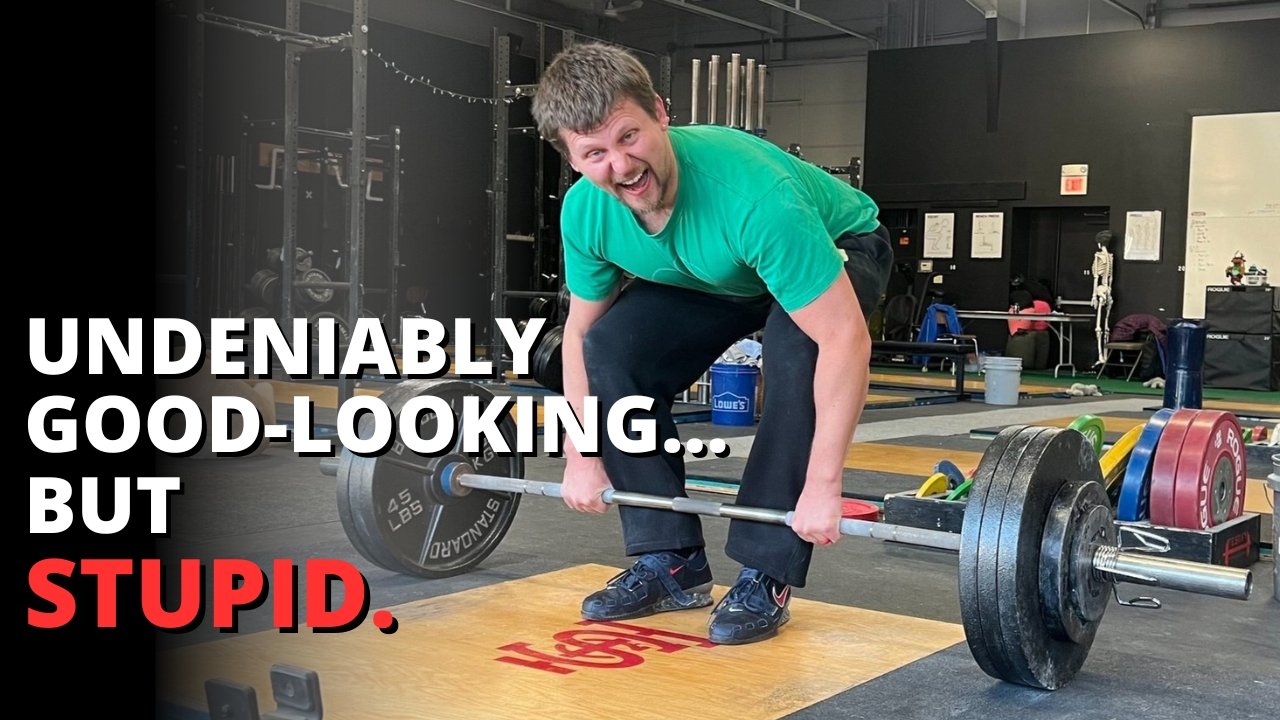Squat Tip: Hips Back AND Chest Down
/Here’s a quick squat tip: When you initiate your squat by reaching back with your hips (i.e., your butt), you need to also point your chest at the floor (i.e., lean over). The converse is also true - when you point your chest at the floor, you need to reach back with your hips.
Note that Tyler’s hips are traveling back while he points his chest at the floor.
These two movements - hips back and chest down - go hand-in-hand with each other, and if you briefly think about it, it will seem rather obvious why this is so. On one hand, if you reach back with your hips while trying to maintain an upright torso, you’ll fall over backward, which is rather unfortunate in any circumstance and especially when squatting with a barbell on your back. On the other hand, if you lean over (i.e., point your chest at the floor) without reaching back with your hips, you’ll fall over forward. Again - preposterous.
So remember, when you initiate your squat, if you’ve got a cue like one of the following running through your head . . .
Hips back
Butt back
Reach backward
Sit back
. . . it can be useful to also tell yourself one of the following cues . . .
Chest down
Lean over
Point your chest at the floor
This will help your balance, and it will also help you get into a position where you can effectively drive your hips out of the bottom of the squat.
We hope this helps you get stronger and live better!
(Some links may be affiliate links. As an Amazon Associate, Testify earns from qualifying purchases.)






